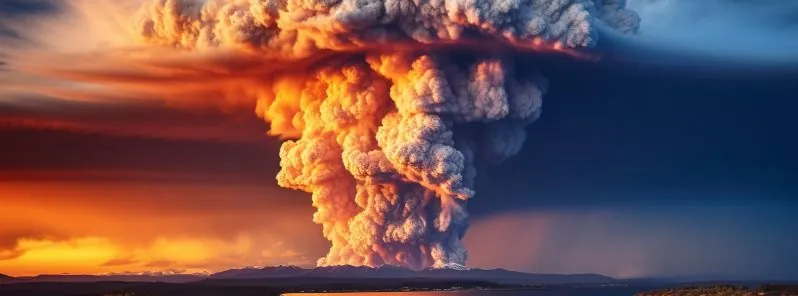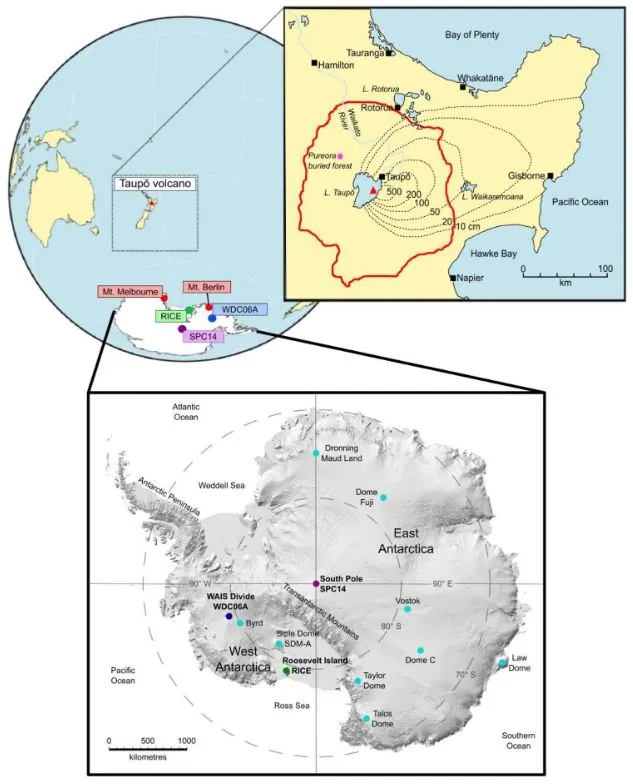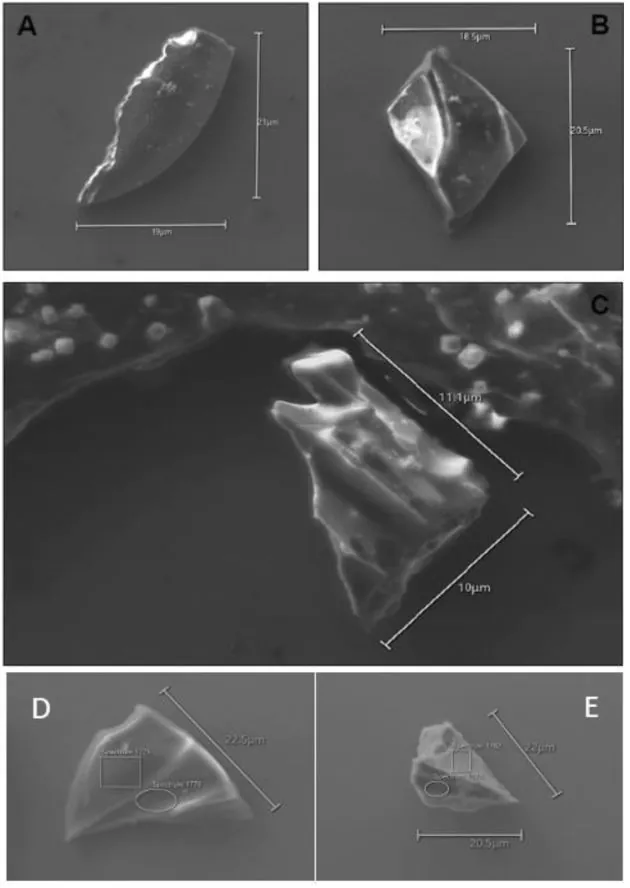New Zealand’s massive Taupō eruption dated by Antarctic ice core study

A recent study published in Scientific Reports discovered volcanic debris from the Taupō eruption approximately 1 800 years ago deeply embedded in Antarctic ice. The findings, made at a depth of 279 m in West Antarctica, offer a precise date for the historical New Zealand eruption.
Volcanic debris from New Zealand’s Taupō eruption around the year 232 has been located at a depth of 279 m (914 feet) in the Roosevelt Island Climate Evolution ice core from West Antarctica. This discovery puts to rest longstanding debates about the eruption’s timing, establishing it as having occurred in late summer or early autumn of that year.
Scientists, led by Stephen Piva, a Ph.D. candidate at Te Herenga Waka—Victoria University of Wellington, have been investigating the Taupō eruption for over a decade. Their research showed that the eruption was one of the most massive in the past 5 000 years, affecting an area of about 20 000 km² (7 722 square miles).
The discovery comprises seven geochemically unique volcanic glass shards. One of these shards aligns with the earlier Ōruanui supereruption of the Taupō volcano, which was likely brought to the surface during the later eruption in 232. The other six shards possess a similar geochemical make-up, conclusively linking them to the Taupō eruption.


The shards served as a dual fingerprint, allowing researchers to confidently attribute them to the Taupō volcano as the source. The glass shards were analyzed to determine their geochemical composition, which led scientists to assess the age of the ice layers surrounding them. These assessments enabled the researchers to date the eruption accurately.
This significant discovery was made about 5 000 km (3 107 miles) away from the Taupō volcano, emphasizing the eruption’s extensive reach. Researchers indicate that the eruption plume would have released an enormous volume of volcanic particles into the atmosphere. These particles would have been dispersed widely by wind currents, leading to far-reaching climatic and atmospheric impacts.
According to Stephen Piva, the ice core records serve as invaluable historical documents. “Finding and fingerprinting volcanic debris trapped in the ice allows us to date when the eruption occurred because we can link it to the modeled age of the ice,” he stated.
In summary, the newly discovered shards offer not only a precise date for the ancient Taupō eruption but also open doors for further studies into the volcano’s possible global atmospheric and climatic effects.
References:
1 Volcanic fallout from Taupō eruption 1,800 years ago found in Antarctic ice core – Victoria University of Wellington – October 10, 2023
2 Volcanic glass from the 1.8 ka Taupō eruption (New Zealand) detected in Antarctic ice at ~ 230 CE – Stephen B. Piva et al. – Nature Scientific Reports – October 9, 2023 – https://doi.org/10.1038/s41598-023-42602-3 – OPEN ACCESS
Featured image credit: The Watchers

great article, i read the article through expecting to see an actual year date with a +/- variance, instead the only year date mentioned states, “approximately 1800 years ago”. Given the accuracy of ice layer dating, akin to tree ring dating i would have expected a more accurate date…or perhaps I’m mistaken?